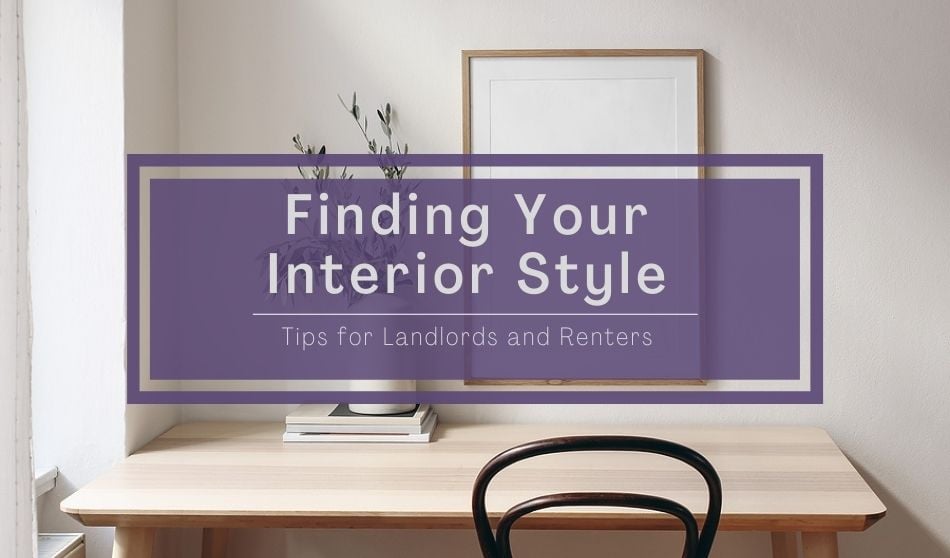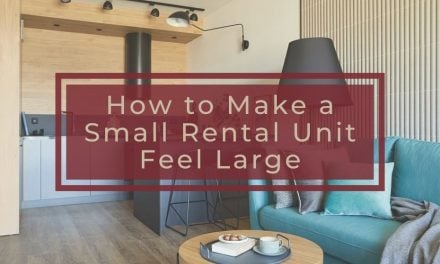Figuring out what you want your decorative style to be is imperative, whether you are furnishing a new rental or are a renter just ready to start decorating your new home. Without a clear direction, you can get to the point where you buy decorations or renovate a space only to end up hating it. Renters can have even more challenges due to lease restrictions that prevent permanent changes to the property. Certain styles are better suited to specific locations or lifestyles, which is important to keep in mind. But getting started can be one of the most difficult parts of any decorating project.
Finding the Broad Picture
While it may seem like an odd step, to help determine what types of interior styles you lean toward, eyeballing the clothes in your closet is actually quite helpful. Take notes of what your favorite clothes are and what they have in common. This commonality might be the color, the fabric, or the pattern. Does your clothing tend to have a more timeless look or have a personality of its own? All of these details will come into play later on. You can bring the colors into the color palette of your interior, and tie in your favorite fabrics to your furniture or curtains.
Expanding Your Horizons
Having a fresh perspective when it comes to decorating is a huge deal. Whether it is visiting in person or virtually looking at a new space, looking at a new space is one of the biggest ways to come up with new ideas and to expand your knowledge of style. Figure out why you like that piece of architecture so much – it could be something like the color, the texture, or the shapes used in it. If you are traveling somewhere in person, keep this in mind and take photos so that you can reference them for your decorating.
Using Mood Boards
While it can seem nostalgic and might be familiar to you from when you were younger, mood boards and similar collages can help you to determine what style you lean toward. Put up inspirational pictures and freely look for pieces that feel good to you. These inspirational photos can come from art, travel, fashion, nature, history, and other topics. These mood boards can be either physical or online, the most important part is to find rooms, furniture, colors, or designs that feel good. Trends will begin to form and you can pick them out. These trends could be as simple as a specific type of furniture or a preference for houseplants, but knowing these details and having them in your head is key.
Once you determine what the overall feeling that you want for your home is, you can begin looking into the commonly used interior styles. While you don’t need to follow them to the letter, having a plan to follow will help your style from falling apart. You can also find details in them that you may like and want to use.
Mid-Century Modern Style
The mid-century modern style is one that generally needs the exterior of the home to match the interior. Because of this, it may be more suited for a landlord who has control over how the exterior looks, rather than a renter who can only work on the interior. This style has a very distinct look and is sparsely furnished, making it one of the less messy styles. The lines are clean and evoke the nostalgic look of the 1950s and 1960s. Because of this, blue and green are commonly used colors.
Industrial Style
Distressed wooden elements and exposed steel are emphasized in the industrial look. Copper-tone accents are commonly used to give a rustic and mature feeling to the decor. Based on the conversion of old warehouses and manufacturing facilities, the industrial style embraces exposed pipes, brick walls, and preserving old floors. Some of the key elements in this style include a mixture of grays, neutrals, and rustic colors, large pieces of furniture, antique fixtures, wooden and metal surfaces. It tends to have a colder feeling, but pops of color and statement pieces are used to warm it up a little bit.
Nautical Design
Having a nautical theme is appropriate for any home that is on the coast or in a tropical area. This makes it a great choice for vacation homes in those locations. This design includes a lot of natural light, splashes of bright colors, wicker furniture, and other nautical accessories. The nautical design focuses on being positive and relaxing, partially because you feel like you are on vacation. Often, the color palettes are colors that are found on the beach and the decorations are inspired by this as well. Common themes for the furniture include linen upholstery, unfinished wood, and sea life decorative accents.
Scandinavian Theme
The most identifiable piece of the Scandinavian interior design is probably the fact that the decor is predominately white. However, this style also includes the principles of symmetry and the use of decorative mirrors. The furniture is functional and stylish, but not trendy and contemporary. This makes this style a very good choice for a long-term home. While the primary color is white, many designers use playful accent colors, which breaks up the monochrome feeling. Having fluid lines, organic materials, and proportional objects are all important pieces of the Scandinavian style.
Learn more: How to Hygge Your Rental
Bohemian Style
One of the more avant-garde styles of interior decorating, the bohemian style involves more of a carefree and nomadic feeling than the other common styles. Vibrant colors and patterns are a staple. Many pieces that are used in this theme have a background in southwestern, Moroccan, and tribal styles. Because of this, animal hides, wood, and metallic accents are consistently used. It is a carefully created messy look and frequently layers textiles like rugs, pillows, and blankets. This style can be good for a small space that can’t necessarily hold a lot of things otherwise.
Modern Farmhouse Design
This style takes the classic country look and gives it a modern twist to make the home more practical and contemporary. Everything is styled to keep the charm and warmth of a country-style home, but the overall look is sleeker. A variety of details help to give this impression, such as smooth lines in the furniture and cabinets, brushed metal accents, and neutral colors. To keep the look from getting too rustic, stick to a predetermined color palette. This is particularly true when using textiles, otherwise, it quickly begins to feel cluttered.
Modern Style
The modern style is one that tends to be blended with other designs in order for it to feel warmer and more welcoming. The overall look of the modern style is very sleek and features many neutrals like black, white, and beige. However, several attributes of modern interior design are fascinating on their own and serve to give your home some interest. Intentional asymmetry, geometric patterns, art pieces, and open floor plans are some of these. A defining feature of the modern style is that it is uncluttered and lacks accessories. Because of this, decor is generally in the form of art pieces.
Shabby Chic Theme
Shabby chic can be described as vintage and DIY. Distressed furniture, antique items, and soft decor are all staples of this style. While many vintage designs are drawn from for this theme, much of the focus goes towards creating a soft and delicate design. Wall hangings, flimsy light fixtures, and linen textiles all help to add to this feeling and almost all of the distressing needed to achieve this look can be done yourself. Whitewashing floors, sanding and then repainting furniture, and even creating your own wall hangings are all parts of the puzzle that is the shabby chic design.






